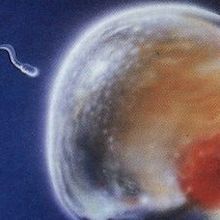mosaicism

Science Summarized: The Mosaic Brain
The Scientist | Apr 13, 2023 | 1 min read
Mutations that accumulate as one ages contribute to various neurological disorders.

Thousands of Mutations Accumulate in the Human Brain Over a Lifetime
Ruth Williams | Dec 7, 2017 | 4 min read
Single-cell genome analyses reveal the amount of mutations a human brain cell will collect from its fetal beginnings until death.

Contributors
Jef Akst and Bob Grant | Nov 1, 2017 | 3 min read
Meet some of the people featured in the November 2017 issue of The Scientist.

To Each His Own
Mary Beth Aberlin | Nov 1, 2017 | 3 min read
Every human brain is far more unique, adaptable, and vulnerable than ever suspected.

Opinion: How to Define Cell Type
Fred H. Gage, Sara B. Linker, and Tracy A. Bedrosian | Nov 1, 2017 | 4 min read
Advances in single-cell technologies have revealed vast differences between cells once thought to be in the same category, calling into question how we define cell type in the first place.

Advancing Techniques Reveal the Brain’s Impressive Diversity
Sara B. Linker, Fred H. Gage, and Tracy A. Bedrosian | Nov 1, 2017 | 10+ min read
No two neurons are alike. What does that mean for brain function?

Infographic: Understanding Our Diverse Brain
Fred H. Gage, Tracy A. Bedrosian, and Sara B. Linker | Oct 31, 2017 | 2 min read
Recent advances in single-cell omics and other techniques are revealing variation at genomic, epigenomic, transcriptomic, and posttranscriptomic levels.

Single-Cell RNA Sequencing Reveals Neuronal Diversity
Catherine Offord | Jun 23, 2016 | 3 min read
Using a new approach to analyze the transcriptomes of thousands of individual cell nuclei in postmortem brains, researchers identify multiple neuronal subtypes.

Mosaic Mutations May Not Be Rare
Anna Azvolinsky | Jun 5, 2015 | 3 min read
Somatic mosaicism may be responsible for a larger proportion of genomic variability within humans than previously thought.

Mosaic Mutations
Kate Yandell | Jul 31, 2014 | 3 min read
Some genetic abnormalities that appear to have sprung up independently in children are in fact present in a portion of their parents’ cells.

Diverse Leaves May Protect Eucalyptus
Kate Yandell | Feb 20, 2013 | 1 min read
A tree in Australia was found to have genetically dissimilar leaves that varied in attractiveness to herbivores.
New Type of DNA Discovered?
Sabrina Richards | Mar 8, 2012 | 3 min read
Small circles of extrachromosomal DNA appear to be widespread in mammals, and may be byproducts of small deletions in the nuclear DNA of somatic cells.